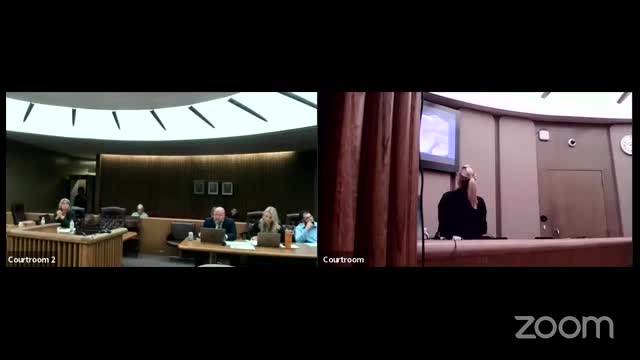Investigation reveals chilling details of body discovery
August 21, 2024 | 252nd District Court, District Court Judges, Judicial, Texas
This article was created by AI summarizing key points discussed. AI makes mistakes, so for full details and context, please refer to the video of the full meeting. Please report any errors so we can fix them. Report an error »

In a recent government meeting, critical discussions emerged surrounding the investigation of a crime scene involving a deceased body. Key evidence presented included various materials found at the site, notably a piece of duct tape and an unknown white fabric, which were determined to be significant in the case. The duct tape was identified as part of the wrapping used on the victim's body, which was covered in white fabric and subsequently encased in a tarp.
Investigators noted that the body was discovered in a shallow grave, which was filled with mud and water, and pieces of fabric and tape were scattered around the area. The evidence suggested that the materials had not been disturbed by external forces, indicating a deliberate placement rather than accidental scattering.
The meeting also highlighted the procedural methods employed by investigators at the crime scene. Photographic documentation was the first step, followed by video recordings to capture the scene comprehensively. The investigators described their technique of documenting the area, emphasizing the importance of preserving the integrity of the evidence through careful video recording, which included the use of yellow flags to mark evidence amidst challenging weather conditions.
As the investigation progresses, the collected evidence, including video recordings and physical materials, will play a crucial role in understanding the circumstances surrounding the case. The meeting underscored the meticulous approach taken by law enforcement in handling sensitive crime scenes, particularly as daylight faded during their investigation.
Investigators noted that the body was discovered in a shallow grave, which was filled with mud and water, and pieces of fabric and tape were scattered around the area. The evidence suggested that the materials had not been disturbed by external forces, indicating a deliberate placement rather than accidental scattering.
The meeting also highlighted the procedural methods employed by investigators at the crime scene. Photographic documentation was the first step, followed by video recordings to capture the scene comprehensively. The investigators described their technique of documenting the area, emphasizing the importance of preserving the integrity of the evidence through careful video recording, which included the use of yellow flags to mark evidence amidst challenging weather conditions.
As the investigation progresses, the collected evidence, including video recordings and physical materials, will play a crucial role in understanding the circumstances surrounding the case. The meeting underscored the meticulous approach taken by law enforcement in handling sensitive crime scenes, particularly as daylight faded during their investigation.
View full meeting
This article is based on a recent meeting—watch the full video and explore the complete transcript for deeper insights into the discussion.
View full meeting
